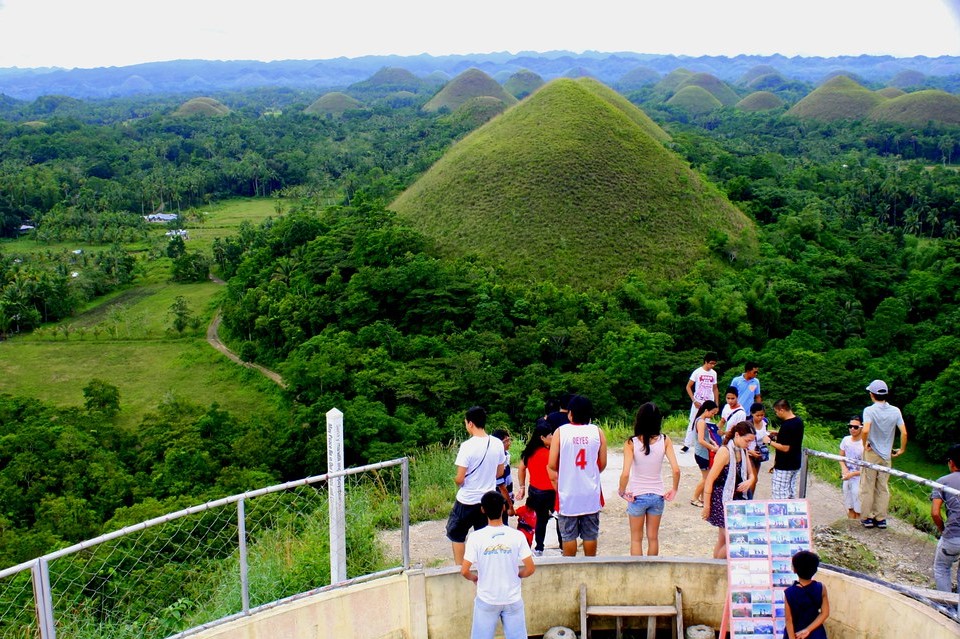
The famed Chocolate Hills of Bohol are not only two but more than 1,268 cone-shaped hills – a very
strange geological formation that has baffled a lot of geologists. The hills are spread over an area
of
50 square kilometers or more and vary in size from 30 meters to 120 meters in height.
What’s unique with these limestone chocolate hills is that they are only covered in grass and the
cone
shape is more or less common to all although differing in size. The hills look chocolaty only during
dry
season when the grass withers and turns into brown and looks like giant chocolate kisses.
